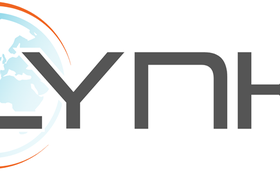Satellite operator Viasat has joined the European Space Agency’s Moonlight project, which aims to develop a lunar orbiting navigation and communication system.
Announced this week, Viasat has secured a contract with program lead Telespazio as the leading team behind the design and development of the network.
Viasat will also be responsible for the ground infrastructure on Earth supporting the network and user terminals intended for use on the Lunar surface.
“We’re bringing our heritage and long-term skillset of cutting-edge innovation and ambitious space communications programs,” Yasrine Ibnyahya, senior director of advanced concepts and technologies at Viasat told DCD. “Along with our longstanding connections working with space agencies all over the world, including ESA, UKSA, and NASA. Viasat is … best placed to develop these capabilities as more and more activities occur off-Earth.”
The system will serve as a data highway on and around the Moon, as well as a cislunar gateway back to Earth, intended to support the expansion of scientific and exploration projects as well as the development of commercial activities like surface rare Earth materials manufacturing and tourism.
ESA will fully fund the contract throughout its first phase. The UK Space Agency, one of the major contributors to the program, selected Viasat, which opened a London office in 2024 as part of its Inmarsat acquisition, to lead the UK effort contributing to Moonlight.
“This marks a pivotal milestone in [Telespazio’s] commitment to the Moonlight program,” Gabrielle Pieralli, CEO of Telespazio said in a statement. “By partnering with a global leader in satellite communications, we can harness cutting-edge technologies to create a secure and efficient communications and navigation infrastructure — essential for the success of lunar missions.”
The lunar timeline
Lunar commercialization remains extremely immature, with theoretical return on investment relying on the demonstration of a plethora of very new technologies that haven’t become significantly more reliable than they were in the Apollo era.
Foundational demonstration will take reliable communications infrastructure, which has been a primary goal of the Artemis campaign.
“Moonlight is a long-term project and will be deployed in phases: targeting initial capability at the end of 2028 with full operations aimed by 2030,” Viasat’s Ibnyahya said.
After a reliable Lunar communications capability is established, longer-term missions will become viable she says, as well as the emergence of the ‘Lunar economy’.
It’s been understood that eons of uninterrupted exposure to solar winds have cultivated deposits of the isotope Helium-3 on the Lunar surface in greater quantity than on Earth. The material is thought to be a future energy source in nuclear fusion, given its lower radiation output and lower reaction temperature than Uranium and Plutonium isotopes. When Lunar enthusiasts analogize the new race to the Moon as a gold rush, Helium-3 is often the gold in question.
Without commercial viability, however, American contractors in space exploration have relied on NASA funding at the cost of the American taxpayer, a finance flow that is becoming increasingly ideologized in the Trump era.
“In the immediate term, there will be significant design work to plan out the various phases of the project before targeting initial capability at the end of 2028,” Ibnyahya says. “Viasat will be closely collaborating with a wide range of UK partners across all segments to deliver this capability.”
Read the orginal article: https://www.datacenterdynamics.com/en/news/viasat-selected-to-design-moonlight-lunar-orbiting-satellite-system-alongside-telespazio/









